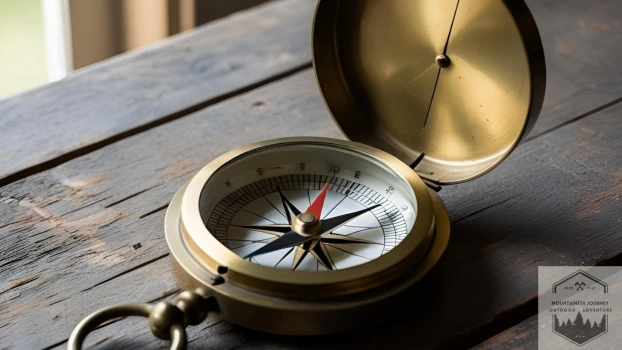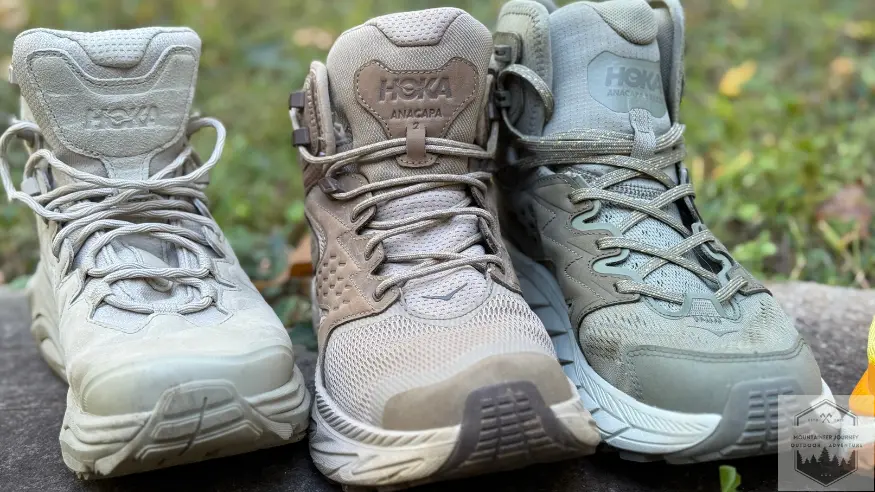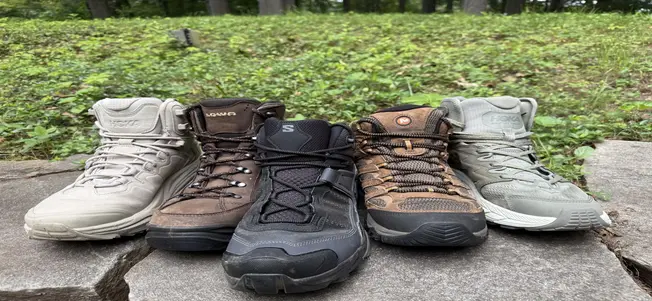Ultimate Backpacking Trip Checklist | Everything You Need to Pack

Backpacking is an amazing experience, getting you into nature and pushing your body and mind. But the success of your trip relies on one thing: your comprehensive backpacking checklist. A good checklist ensures you carry everything you need and helps you manage your pack weight, so you can have a better experience and be safer. This ultimate backpacking checklist will lead to a better experience as less worry.
This guide will take you through each category of essentials to build the perfect backpacking checklist. From choosing the right gear to packing smart, we’ve got everything covered that can make or break your trip.
Whether you’re a newbie on your first trip or a seasoned backpacker, you’ll find valuable info and tips to get you ready for your next outdoor adventure. We also have a free downloadable backpacking trip checklist here.

Backpacking Trip Checklist
Before we get into the details, let’s start with the big picture of what you need for a backpacking trip by referring to the ultimate backpacking checklist. This is the foundation of your packing process, so you have everything you need for a safe and fun trip.
- Backpack: A durable, comfortable backpack for the length of your trip and the weight you’ll be carrying.
- Clothing: Weather appropriate clothing and layers for cold.
- Footwear: Hiking boots or shoes that are broken in.
- Shelter: Tent, tarp or other.
- Sleeping Gear: Sleeping bag and pad for the climate.
- Cooking Equipment: Stove, fuel and lightweight cookware.
- Food and Water Supplies: Enough food for the trip plus water filter or purification tablets.
- Navigation Tools: Map, compass and maybe a GPS.
- First Aid Kit: Full kit with essentials for minor injuries and illnesses.
- Hygiene Products: Biodegradable soap, toothbrush and other personal items.
- Miscellaneous: Headlamp, multi-tool and weather appropriate gear like rain covers or sun hats.
This is just a general list and will be expanded upon in the following sections with specific items and considerations for different backpacking scenarios.
Download The Free Backpacking Checklist Here
The Ultimate Backpacking Checklist
Choosing Your Backpack
Choosing the right backpacking gear, especially the backpack itself, is the most important decision as it carries all your essentials and affects your comfort and mobility. Here are the key factors to consider:
- Capacity: The size of your backpack, measured in liters, should match the length of your trip and the amount of gear you’ll be carrying. For weekend trips a 30-50 liter pack will do, for multi-week trips 60 liters or more.
- Fit: A backpack should fit your torso length and have comfortable, adjustable straps. Try on different models with some weight in them to see how they feel.
- Features: Compartments that fit your packing style, hydration reservoir for easy drinking and external attachment points for sleeping pads or other items you may need to externally attach to your bag.
- Material and Durability: Choose materials that balance durability and weight. Nylon and polyester are common for their wear and tear resistance.
Backpacking Gear | Hiking Boots & Clothing
The right clothing and footwear can make all the difference in your comfort and safety on a backpacking trip. This is a MUST for your backpacking checklist.
Clothing
- Base Layers: Start with moisture wicking base layers to stay dry and comfortable. Synthetic or merino wool for insulation even when wet.
- Insulation: Fleece or lightweight down jacket for cold climates. These layers should be packable and quick drying.
- Outer Layer: A waterproof and breathable shell jacket and hiking pants are essential for rain and wind protection.
- Additional Items: Don’t forget hats, gloves and socks. Wool or synthetic socks that keep moisture away from the skin and reduce the chance of blisters.
Footwear
- Hiking Boots/Shoes: Boots or hiking shoes? It’s up to you. Boots offer more ankle support and protection which is good for rugged terrain, shoes might be enough for lighter, less technical trails. Traction is important, this all depends on the outsole. See Contagrip vs Vibram for more, also what is contagrip, and is Vibram worth it?
- Fit and Break-in: Make sure your footwear is well fitted and broken in before the trip to avoid discomfort and blisters. See how to break in hiking boots.
- Water Resistance: Consider the water resistance of your footwear especially if you’ll be crossing streams or hiking in wet conditions. Use of waterproof membranes like Gore-tex are avaible, just know this will reduce the breathability of your boot.
Pro Tip: Always carry an extra pair of socks and consider gaiters for extra protection against dirt, pebbles and water.
List of clothing items for each season
Spring/Autumn
- Waterproof jacket and trousers
- Fleece jacket
- Long sleeve shirts and long pants
- Hat and gloves
Summer
- Sun hat and sunglasses
- UV-protective long sleeve shirt
Winter
- Insulated jacket and trousers
- Thermal base layers
- Waterproof winter gloves and insulated hat

Shelter and Bedding Essentials | Tent and Sleeping Bag
Your shelter and bedding is key to a good night’s sleep and protection from the elements. Here’s what to consider:
Shelter
- Tents: A good backpacking tent should be lightweight, easy to set up and provide wind and rain protection. See how to set up of a tent for more. Consider the number of occupants and the conditions of your destination. Most backpackers would benefit from lightweight 3-season backpacking tents due to the need for carrying them over long distances.
- Alternatives: For ultralight backpackers, alternatives like hammocks or bivy sacks might be suitable depending on the environment and weather.
Bedding
- Sleeping Bags: Choose a sleeping bag rated for the lowest temperature you expect to encounter. Down sleeping bags offer great warmth to weight ratio but perform poorly if wet, synthetic bags are heavier but maintain insulation when damp.
- Sleeping Pads: A good sleeping pad provides comfort and insulation from the ground. Options range from foam pads which are durable and cheap to air pads and self inflating mats which offer more comfort and packability.
Cooking and Food
Proper nutrition and hydration is key to energy and morale on a trip. Here’s how to plan your meals and what cooking gear to bring:
Cooking Equipment
- Stove Types: Choose the most efficient backpacking stove, such as the Jetboil MiniMo Cooking System, or between canister stove, liquid fuel stove or ultralight alcohol stove depending on the length of your trip, group size and fuel availability.
- Cookware: Lightweight, durable cookware sets for backpacking are best. Titanium and aluminum are popular choices because of their light weight and good heat conduction.
Food
- Meal Ideas: High energy, nutritious and easy to prepare backpacking food. Freeze dried meals are convenient but you can also assemble your own meals with instant rice, beans, dehydrated vegetables and meats.
- Pre-Trip Meal Prep: Dehydrated fruits are an amazing idea for a great source of energy and fruits that will last weeks. This must be cooked prior to your trip. See how to dehydrate apples and how to dehydrate bananas.
- Snacks: Energy bars, nuts, dried fruits and jerky for quick energy boosts during hikes.
- Food Packing Tips: Use resealable bags to portion out each meal, reduces weight and bulk. And remember to pack out all your trash.

Navigational Tools
Navigating is key to any hiking trip. Here’s how to gear up:
- Maps: Carry a detailed, up to date map of the area. Topo maps are best for backcountry trips.
- Compass: A good compass is a must have with your map. Consider one with sighting mirrors for extra accuracy.
- GPS Devices: For the tech savvy hiker a GPS device can provide real time location tracking and route planning.
- Mobile Apps: Various apps can augment physical tools with downloadable maps and other features but never rely solely on electronic devices as they can fail due to battery or signal issues.
First Aid Kit and Safety Gear
Safety should never be compromised. Here’s what to include in your first aid kit and safety gear:
First Aid Kit
- Essentials: Bandages, antiseptic wipes, blister treatments, pain relievers. Customize your kit based on your needs and trip length.
- Additional Supplies: Tweezers, scissors, thermometer. Don’t forget personal medications and possibly an EpiPen if you have severe allergies.
Safety
- Emergency Devices: Whistle for signaling and headlamp or flashlight for night visibility.
- Bear Safety: In bear country carry bear spray and know how to store food to avoid attracting wildlife.
Pro Tip: Check and restock your first aid supplies regularly so they stay up to date and ready for anything.
Personal Hygiene and Environmental Care
Personal hygiene important for yourself on your trip not only for comfort but also for minimal environmental impact.
Hygiene
- Biodegradable Soap: Use environmentally friendly soap for washing yourself and your dishes.
- Toothbrush and Toothpaste: Pack a lightweight travel toothbrush and a small tube of toothpaste.
- Quick-Dry Towel: A small, microfiber towel dries fast and packs small.
- Sanitizer: Hand sanitizer is key for hygiene before meals or after handling dirty items.
Environmental Care
- Leave No Trace Principles: Always follow Leave No Trace principles by packing out what you pack in, disposing of waste properly and minimizing campfire impacts.
- Toilet Etiquette: When you gotta go use a trowel to dig a cat hole at least 200 feet from water sources, trails and camp. Cover and disguise when done.
Nice to Have
While your backpacking trip checklist should focus on essentials, there are several nice to haves that while not necessary can be super nice to have.
Comfort Enhancers
- Inflatable Pillow: For a good night’s sleep an inflatable pillow is lightweight and compact.
- Camp Shoes: Lightweight sandals or shoes for your feet at the campsite.
- Sitting Pad: A small, foldable pad for comfort during breaks.
- Foldable camping chair: For reading, resting anything you can think of!
Tech Gear
- Portable Charger: Charge your devices especially if you use your phone for photos or GPS navigation.
- Solar Charger: For longer trips a solar charger can be a lifesaver for charging electronic devices.
Luxury Items
- Book or E-reader: Unwind in the evening with a lightweight e-reader or small book.
- Camera: Take high quality photos of your trip if your phone’s camera isn’t up to par.
Pre-Trip Prep
Pre-trip prep can make all the difference between a good trip and a bad one.
- Physical Prep: Make sure you’re physically prepared for backpacking by training with weighted packs and doing cardio. See how to train for a hike for more info.
- Gear Checks: Test all your gear before you leave especially new gear or gear that hasn’t been used in a while.
- Permits and Regulations: Check if your destination requires permits or has any restrictions such as fire bans or bear proof container requirements.
Customize Your Backpacking Checklist
No two backpacking trips are the same and so your backpacking trip checklist shouldn’t be either. Here’s how to customize yours:
Consider the Destination
- Climate and Weather: Adjust your gear list based on the weather—more layers for cold, lighter for warm.
- Terrain: Tough terrain means stronger boots and extra ankle support, flat trails mean lighter footwear.
- Packing: Use a stuff sack to organize and compress items like toilet paper and sleeping bags, maximizing space in your backpack.
Personal Needs
- Trip Duration: Longer trips mean more food, more water and possibly different shelter options.
- Personal Health: Include any necessary medications and consider your physical limitations when choosing gear.
Packing Mistakes to Watch Out For
Packing for a backpacking trip can be overwhelming and it’s easy to make mistakes. Here are some to avoid:
- Overpacking: Bringing too much, including unnecessary items like extra trekking poles, means you’ll be carrying unnecessary weight. Pack only what you need and use a checklist to keep track.
- Under packing Essential Gear: Never skimp on essential gear like a first aid kit, enough food, water filtration and navigation tools. Forget the fancy stuff!
- Ignoring Weather Forecasts: Always check the weather before you leave and pack accordingly. Sudden weather changes can ruin your trip.
- Forgetting to Test New Gear: Always test new gear at home to make sure it works and you know how to use it. I always make sure to test out my near gear, whether in the backyard or a short hiking trip to know it works.
Backpacking requires planning and attention to detail. Use a backpacking trip checklist to make sure you have everything you need for a safe and enjoyable trip. Customize your checklist for your destination and needs and avoid packing mistakes by planning ahead and testing your gear.
Frequently Asked Questions
What are the big 3 items when going backpacking?
The big 3 in backpacking: shelter, food/water, and sleeping gear. These are the core 3 that you need in your backpacking checklist that’ll help you outlast the weather with minimal gear.
Adventure Awaits,
Tyler






